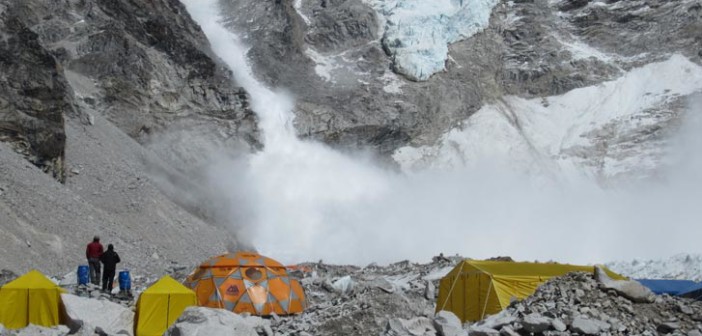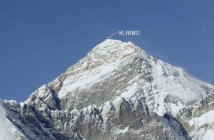Next month, the Nepalese government will begin changing the deadly route that took the lives of 16 climbers last season. The route should be ready by spring – the beginning of the 2015 climbing season.

New route to Everest Camp 1
The accident last year occurred on the Khumbu Icefall, where a piece of the glacier broke loose, shattered, and swept over the route talking all the climbers in it’s path. After the tragedy, many Sherpas boycotted, seeking safer conditions and better pay. This prompted a complete shutdown of the mountain, and a cancelation of the rest of the 2014 climbing season.

Looking up the Khumbu Icefall – Photo: bibiweb
This route is actually not completely new; it was the route used pre-1990′s. It was changed to it’s currently more dangerous counterpart because it was shorter and easier for new climbers, even though it was known that it was prone to avalanche danger. This spring, it will revert to be a bit more difficult, but far safer. The change will avoid the left side of the Khumbu Icefall, therefor avoiding the hanging glaciers above.
“We think the risk of avalanche in the left part of the Khumbu Icefall is growing and we are moving the route to the center where there is almost no such danger,” said Ang Dorji Sherpa, chairman of the Sagarmatha Pollution Control Committee, an organization authorized to set the route of Everest expeditions.
Though this route change is a step in the right direction in making Everest safer, it seems like a reluctant move by the Nepalese government. The Serpa’s constant cry for help is rarely considered by the government. One of the biggest arguments is over the use of helicopters, even for rescue. Due to Nepal law, the use of helicopters above basecamp is prohibited for environmental reasons.
This restriction on helicopters mean Sherpa’s have to shoulder a massive amount of supply weight going Camp 1, which includes braving the Khumbu Icefall. Many Sherpas have to make this journey 30-40 times a season. Though the new route is harder, it will reduce risk for the Sherpas traveling with supplies.
Hopefully, the new route will alleviate two safety concerns at once.

The Khumbu Icefall from basecamp – Photo: mckaysavage
Source: BBC


